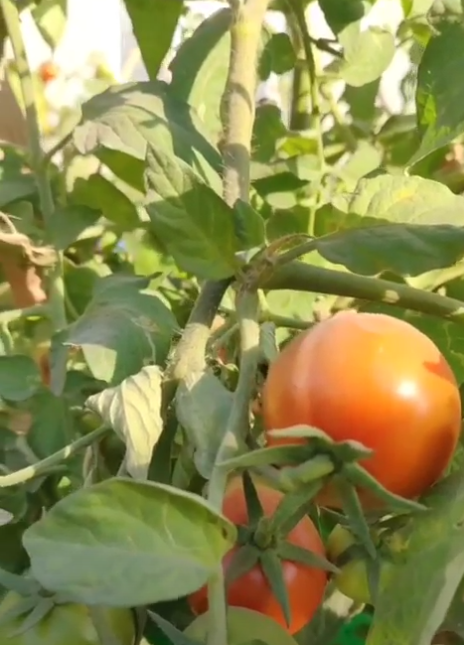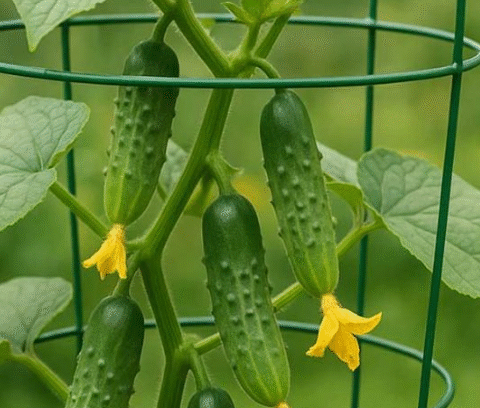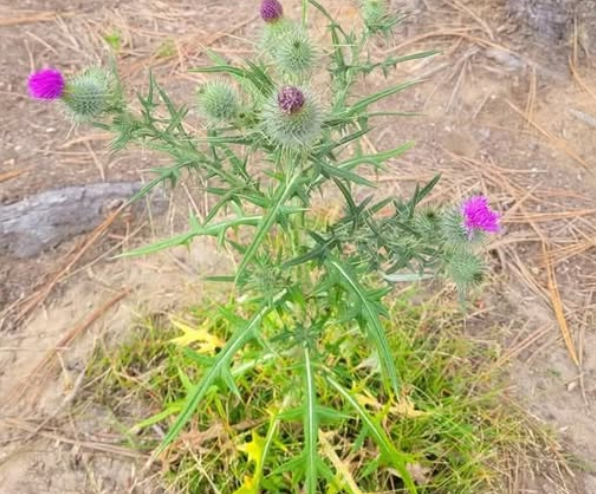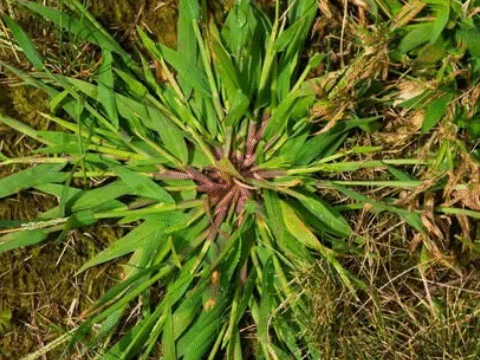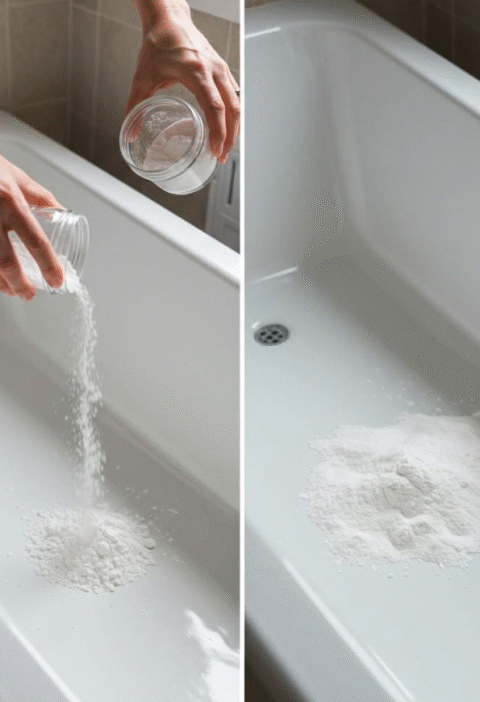Grow Juicier Tomatoes by Feeding Them This Kitchen Staple!
Tomatoes are a garden favorite for a reason—versatile, flavorful, and deeply rewarding to grow. 🍅 But producing rich, juicy fruits requires more than just sunshine and water. With a few natural tricks using common kitchen staples, you can supercharge your tomato harvest while protecting your plants from disease—naturally and affordably!
🌱 Start with Healthy Soil
According to Dr. Leila Nour, a soil and plant nutritionist, “The key to high-yield tomatoes is rich, organic soil that retains nutrients and drains well.” Tomatoes crave well-drained, nutrient-dense environments. Boost your soil with compost, worm castings, or well-aged manure to improve structure and provide long-lasting nutrition.
Before planting, turn the soil well and incorporate organic matter. If you’re using raised beds or containers, be sure to use a soil mix designed for vegetables that includes compost, peat, and perlite for optimal results.
For best results, test your soil’s pH. Tomatoes prefer a slightly acidic range of 6.0 to 6.8. You can use lime to raise the pH or sulfur to lower it if needed. Maintaining the right balance will enhance nutrient uptake and reduce disease susceptibility.
🌿 Feed Your Tomatoes the Natural Way
Ongoing Organic Fertilization
- Compost Tea: Brewed by soaking compost in water—perfect for biweekly feeding. Rich in microorganisms and nutrients, it stimulates root growth and plant health.
- Banana Peel Water: High in potassium, essential for fruit development. Let banana peels steep in water for 48 hours before applying.
- Liquid Seaweed or Fish Emulsion: Supplies trace minerals and supports resilience. These also promote flowering and overall vigor.
Tip from Prof. Mark Benson: “Tomatoes are potassium lovers—use banana peel tea or wood ash sparingly during fruiting for flavor-rich harvests.”
Additional Natural Boosters
- Crushed eggshells: Add calcium to prevent blossom-end rot.
- Epsom salt: Magnesium sulfate improves leaf color and flower production. Mix 1 tablespoon per gallon of water monthly.
- Used coffee grounds: Improve soil texture and offer a mild nitrogen boost.
💧 Watering for Flavor & Health
- Water deeply: 1–2 inches per week is ideal—aim for consistent moisture. Deep watering promotes deeper root growth.
- Morning is best: Reduces evaporation and fungal risk.
- Target the base: Avoid wetting leaves to prevent fungal disease. Use drip irrigation or a soaker hose for best results.
- Mulch: Use straw, grass clippings, or compost to retain moisture and regulate soil temperature.
🚫 Common Tomato Diseases & Prevention Tips
Top Tomato Diseases
- Early blight: Caused by Alternaria fungus; shows as dark spots on leaves.
- Powdery mildew: White powdery coating that stunts growth.
- Fusarium wilt: Soil-borne fungus causing yellowing and wilting.
- Blossom-end rot: Linked to calcium deficiency and inconsistent watering.
Prevention Methods
- Proper spacing: Promotes air circulation.
- Crop rotation: Avoid planting tomatoes in the same spot each year.
- Sanitation: Remove diseased leaves and dispose away from garden.
- Companion planting: Basil, marigold, and garlic can deter pests and diseases naturally.
🧴 Natural Fungal Spray Recipe for Tomatoes
Ingredients:
- 1 liter water
- 1 tbsp baking soda
- 1 tbsp vegetable oil
- 1 tbsp mild dish soap (unscented)
Instructions:
- Mix all ingredients in a spray bottle.
- Shake until the baking soda dissolves fully.
- Spray on tomato foliage weekly (avoid midday sun).
- Reapply after heavy rain.
How It Works:
- Baking soda: Raises pH on leaves—discouraging fungi.
- Vegetable oil: Helps adhere to leaves.
- Dish soap: Emulsifies mixture and can deter soft-bodied insects like aphids.
📊 Tomato Nutrition & Support Table
| Ingredient | Main Nutrient | Benefit to Tomato |
|---|---|---|
| Compost | Balanced | Feeds soil and roots gradually |
| Banana Peel | Potassium | Improves fruit size and taste |
| Wood Ash (sparingly) | Potassium | Supports flowering and fruiting |
| Fish Emulsion | Nitrogen | Boosts leafy growth and resilience |
| Baking Soda Spray | — | Fungal disease prevention |
| Eggshells | Calcium | Prevents blossom-end rot |
| Epsom Salt | Magnesium | Improves leaf health and flowering |
❓ Top 10 FAQs for Juicier, Healthier Tomatoes
- How often should I feed tomato plants? Every 10–14 days during active growth and fruiting.
- Can I use banana peels directly in the soil? Yes—chop or blend first for faster breakdown.
- Does baking soda harm plants? Not if used in proper amounts and intervals.
- Should I remove lower leaves? Yes—especially those touching soil or showing spots.
- Can I use Epsom salts? Occasionally for magnesium—but test soil first.
- What’s the best mulch for tomatoes? Straw, shredded leaves, or compost.
- Why are my tomatoes cracking? Inconsistent watering—maintain steady moisture.
- Can I grow tomatoes in pots? Yes! Use large containers (15+ gallons) with drainage.
- How much sun do tomatoes need? At least 6–8 hours of direct sunlight daily.
- When to harvest tomatoes? When they’re fully colored and slightly soft to the touch.
🌞 Final Thoughts: Let Nature Nourish Your Tomatoes
With a combination of smart feeding, proper hydration, and natural disease protection, your tomato plants will reward you with rich, flavorful fruits all season long. 🍅 Start with healthy soil, nourish consistently, and let nature do the rest. Happy gardening!
Use these time-tested natural techniques and your tomato harvest will not only taste better—it’ll grow with resilience, health, and sustainability. Whether you’re feeding your family or stocking your pantry, these juicy red gems are well worth the extra care. 🌿
